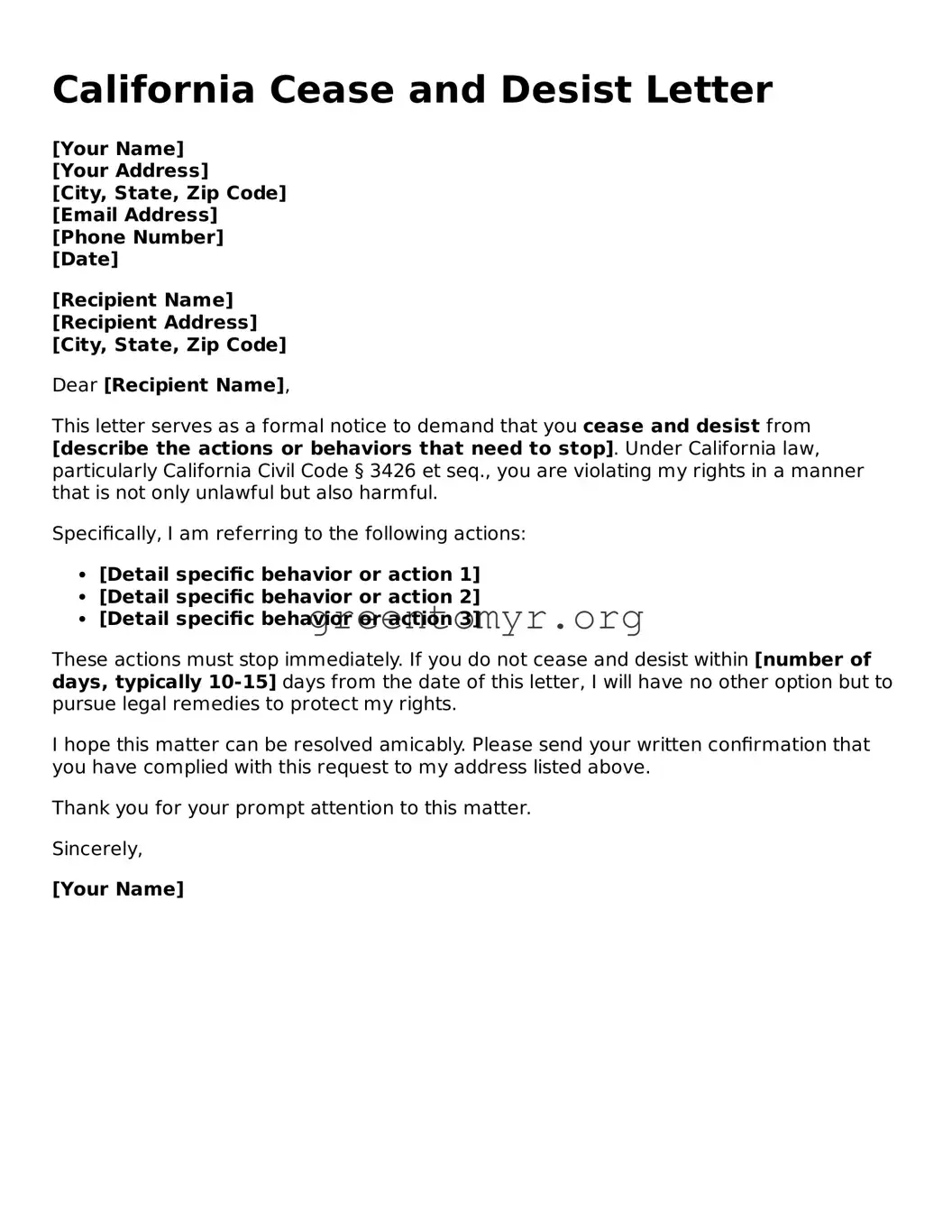California Cease and Desist Letter
[Your Name]
[Your Address]
[City, State, Zip Code]
[Email Address]
[Phone Number]
[Date]
[Recipient Name]
[Recipient Address]
[City, State, Zip Code]
Dear [Recipient Name],
This letter serves as a formal notice to demand that you cease and desist from [describe the actions or behaviors that need to stop]. Under California law, particularly California Civil Code § 3426 et seq., you are violating my rights in a manner that is not only unlawful but also harmful.
Specifically, I am referring to the following actions:
- [Detail specific behavior or action 1]
- [Detail specific behavior or action 2]
- [Detail specific behavior or action 3]
These actions must stop immediately. If you do not cease and desist within [number of days, typically 10-15] days from the date of this letter, I will have no other option but to pursue legal remedies to protect my rights.
I hope this matter can be resolved amicably. Please send your written confirmation that you have complied with this request to my address listed above.
Thank you for your prompt attention to this matter.
Sincerely,
[Your Name]
